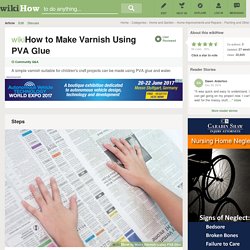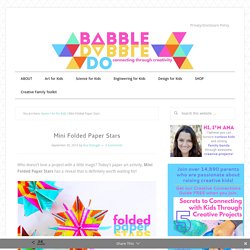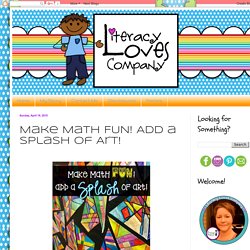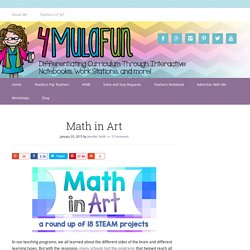

How to Make Varnish Using PVA Glue: 7 Steps. Steps <img alt="Image titled Make Varnish Using PVA Glue Step 1" src=" width="728" height="485" class="whcdn" onload="WH.performance.clearMarks('image1_rendered'); WH.performance.mark('image1_rendered');">1Set up the area.

Cover the work surface with newspaper or other cover to protect it. <img alt="Image titled Make Varnish Using PVA Glue Step 2" src=" width="728" height="485" class="whcdn">2Use the ration of two thirds glue to one third water. The exact amount used will depend on the size of your craft project. Mini Folded Paper Stars. Who doesn’t love a project with a little magic?

Today’s paper art activity, Mini Folded Paper Stars has a reveal that is definitely worth waiting for! Mini Folded Paper Stars are perfect for a rainy afternoon stuck inside, they may add a little brightness to your family’s creative day! This project is great for children ages 7+ but younger children can definitely take part by decorating them and having an adult or older sibling assist them in the cutting and folding process. Like most of the paper projects on Babble Dabble Do, Mini Folded Paper Stars use a minimum of materials. You can make them using regular copy paper but for a sturdier star I recommend printing the template on cardstock.
This post contains affiliate links. Educational Technology and Mobile Learning: A Wonderful Resource for Teaching Computer Science. February 17, 2017 We just learned about this awesome educational resource from Google’s recent blog post “ Three Ways to Get Started with Computer Science and Computational Thinking” written by the creator of CS Unplugged, Tim Bell, professor of Computer Science and Engineering in University of Canterbury.

CS Unblugged is a website that features an amazing collection of free learning activities and materials to use with your students to teach them about computer science and computational thinking. Using selected hands-on activities, students will get to collaboratively work on challenging games and puzzles and will make use of a wide variety of materials such as crayons, stings and cards. “The activities introduce students to Computational Thinking through concepts such as binary numbers, algorithms and data compression, separated from the distractions and technical details of having to use computers.
STEM. Literacy Loves Company: Make Math FUN! Add a Splash of Art! Hi There!

Today I want to share with you a couple of ways that I integrated art into my geometry instruction this last quarter. We were just at the beginning of our geometry instruction and were learning about lines. What Do We Do All Day. 5 STEM tools you can use for any subject. Math in Art – 15+ STEAM Projects! In our teaching programs, we all learned about the different sides of the brain and different learning types.

But with the recession, many schools lost the programs that helped reach all learning types – especially art. Art is more than just creating beautiful pieces, many of the great master painters used math concepts to make their pieces even more appealing. Art helps other subjects come alive! So how can we integrate math into art for our students? Here’s over 15 resources for covering both math and art concepts in a lesson! Third Grade Galore: Integrating Techonology into Math. Today I'm linking up with Kristin at iTeach 1:1 for The topic for today (actually yesterday) is integrating technology into math.

Skitch App I've posted about this app before, but my kids really enjoy it. We used it when we wanted to document math around the school. These are pictures from our area and perimeter hunt. The students went around the school and took a picture of something that showed area or perimeter. Then using Skitch, they added their lines and a label.
I printed all the pictures and we hung them up. We also did this at the beginning of our fractions unit to show objects that were divided into equal parts. The kids love walking around the school to take their pictures. It is a bit of a competition to see who can find the coolest object. How are you integrating technology into math? How else could Skitch be used in your classroom? Head on over and link up with your idea!